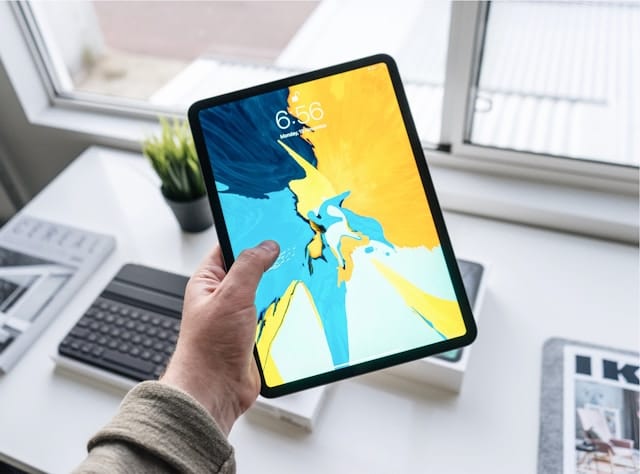What Are the Techniques to Improve Navigation Accuracy on Your GPS-Enabled Tablet?

GPS technology is a pivotal tool in our everyday lives. From guiding us on road trips to helping us locate nearby restaurants, the utility of this marvel cannot be understated. However, there can be moments when your GPS-enabled tablet does not provide the level of accuracy you need.
This article aims to shed light on various techniques you can employ to enhance the navigation accuracy of your GPS-enabled tablet. We will delve into understanding GPS technology, the factors affecting its accuracy, and the practical steps you can take to optimize its performance.
A voir aussi : What Are the Steps to Set Up a Secure Email Account on Your Smartphone?
Understanding the Global Positioning System (GPS)
Before we delve into the techniques to improve GPS accuracy, let's gain a clear understanding of how the Global Positioning System works.
The Global Positioning System (GPS) is a network of about 30 satellites orbiting the Earth at an altitude of 20,000 km. These satellites transmit signals to earth which are picked up by GPS receivers, like the one in your tablet, to calculate your precise location. This is done by measuring the time it takes for the signal to travel from the satellite to the receiver.
A lire en complément : How to Use Your Smartphone to Monitor and Control Home Heating Systems?
However, there are various factors, both environmental and technological, that can affect the accuracy of these signals, subsequently impacting your tablet's navigation accuracy.
Factors Affecting GPS Accuracy
Knowledge of the factors that impact GPS accuracy is foundational to improving it. Here are some of the key influences:
- Environment: Natural and man-made environments can hinder GPS signal reception. For instance, tall buildings, dense foliage, and indoor spaces can block or reflect signals, resulting in inaccurate location data.
- Satellite Geometry: The position of the satellites in the sky can also impact the accuracy. If the satellites are closely grouped together in the sky, the accuracy tends to be lower.
- Atmospheric Conditions: The GPS signal has to pass through the Earth's atmosphere, and changes in atmospheric conditions can slow down the signal slightly, affecting the accuracy.
- Quality and Design of the GPS Receiver: The design and quality of the GPS receiver in your tablet also play a crucial role in the accuracy. Higher-quality receivers can pick up weaker signals and work better in challenging conditions.
Practical Steps to Enhance GPS Accuracy
Now that we have a better understanding of the factors influencing GPS accuracy, let’s explore some practical techniques you can employ to improve it on your tablet.
- Keeping your device updated: Regularly updating your tablet’s software can enhance GPS accuracy. Manufacturers often release updates to improve the performance and fix bugs in the system.
- Clearing the surroundings: Using your tablet in an open area can enhance the GPS signal reception. Try to avoid obstructions such as tall buildings and dense foliage.
- Using WiFi and mobile networks: Most tablets use Assisted GPS (A-GPS), which uses data from WiFi and mobile networks in addition to satellite signals to improve the speed and accuracy.
- Calibrating the compass: Regularly calibrating your tablet's compass can also help improve GPS accuracy. This can be done through the tablet's settings or using a dedicated compass calibration app.
Advanced Techniques to Improve GPS Accuracy
For those who need high-level precision, there are some advanced techniques to further enhance GPS accuracy.
- Differential GPS (DGPS): This method uses a network of fixed, ground-based reference stations to broadcast the difference between the positions indicated by the GPS satellite system and known fixed positions.
- Real-Time Kinematic (RTK): RTK is a technique used to enhance the precision of position data derived from satellite-based positioning systems. It uses a single base station receiver and one or more roving receivers.
- Wide Area Augmentation System (WAAS): WAAS is a system of satellites and ground stations that provide GPS signal corrections for better position accuracy.
By employing these techniques, you can optimize the functionality of your GPS-enabled tablet and ensure that you get the most accurate data for your navigation needs. Remember, while GPS technology is incredibly advanced, it still has its limitations. Understanding these can help you make the most of your device's capabilities.
Correcting GPS Errors with Technology
While the methods mentioned earlier provide valuable insights into improving GPS accuracy, researchers and developers have been tirelessly working on technological solutions to rectify common GPS errors. This section examines how advanced technology can be employed to correct GPS inaccuracies, providing even more precise location data on your GPS-enabled tablet.
Selective Availability Anti-Spoofing Module (SAASM) was once utilized to intentionally degrade public GPS signals for national security purposes. However, in May 2000, the U.S. government discontinued this practice, significantly increasing the accuracy of civilian GPS.
Carrier-Phase Enhancement (CPGPS) is considered to be more accurate than code-based positioning, as it uses the phase of the carrier signal, rather than the information content of the signal. However, its complexity and cost make it more suitable for high-precision applications.
Relative Kinematic Positioning (RKP) is a relative positioning method that measures the phase of the signal's carrier wave rather than the information content of the signal itself. This method typically involves a network of dedicated ground-based reference stations to provide corrections to the errors in the GPS measurements.
Assisted GPS (A-GPS) is a system that often significantly improves the startup performance, or time-to-first-fix (TTFF), of a GPS satellite-based positioning system. It achieves this by storing and reusing satellite data in between uses and using data from a network of ground-based reference stations.
From these advanced technological solutions, it's clear that improving GPS accuracy is an ongoing endeavor, with engineers and researchers constantly developing new algorithms and technologies to make GPS even more accurate and reliable.
The Global Positioning System has undeniably revolutionized the way we navigate our world. However, as with any technology, understanding its limitations is key to optimizing its functionality. The accuracy of the GPS on your tablet can be influenced by a variety of factors, including your environmental conditions, satellite geometry, atmospheric conditions, and the quality of your device's GPS receiver.
By being aware of these factors and employing the practical and advanced techniques outlined in this article, you can significantly enhance the accuracy of your GPS-enabled tablet. From ensuring your device is regularly updated to utilizing advanced technologies such as DGPS, RTK, and WAAS, there are numerous ways to get the most out of your GPS technology.
Remember, the quest for perfect GPS accuracy is a continuous journey filled with technological advancements and innovative solutions. So, whether you're using your tablet for casual navigation or carrying out high-precision tasks, these tips and techniques can help you achieve the accuracy you require. While GPS technology may not be perfect, with a little bit of understanding and fine-tuning, you can improve its accuracy and reliability, making the most of your GPS-enabled tablet.
